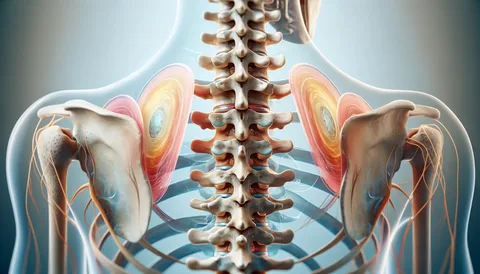Introduction
ICD 10 DJD, also commonly referred to as osteoarthritis, is one of the most prevalent chronic musculoskeletal conditions worldwide. It leads to progressive cartilage breakdown, resulting in pain, stiffness, swelling, and functional limitations.
For healthcare providers, medical coders, and insurance companies, the ICD-10 classification system provides a universal method to document and track DJD diagnoses. The ICD-10 DJD codes ensure accuracy in patient records, billing, research, and clinical decision-making.
In this guide, we’ll break down what ICD-10 DJD means, the coding categories, common examples, challenges, and the importance of proper documentation.
What is DJD (Degenerative Joint Disease)?
ICD 10 DJD is a chronic, progressive condition caused by the deterioration of articular cartilage, the smooth tissue that cushions joints. Without this protective layer, bones rub against each other, leading to pain and joint damage.
Common symptoms of DJD include:
-
Joint pain that worsens with activity
-
Morning stiffness or stiffness after inactivity
-
Swelling and tenderness in affected joints
-
Cracking or grinding sound when moving
-
Reduced range of motion
-
Bone spurs in advanced cases
ICD-10 Overview
The International Classification of Diseases, 10th Revision (ICD-10), developed by the World Health Organization (WHO), is a global system for coding diseases and medical conditions.
ICD-10 codes serve multiple purposes:
-
Standardization: Creates consistency in diagnosis across hospitals and countries
-
Medical billing: Ensures accurate insurance reimbursement
-
Data collection: Helps track prevalence and outcomes of diseases
-
Clinical research: Supports studies and new treatment strategies
ICD-10 Codes for DJD
DJD is classified under the M15–M19 category within ICD-10, which covers osteoarthritis. The codes provide details about the type, severity, and location of DJD.
1. M15 – Polyosteoarthritis (Multiple Joints)
Used when more than one joint is affected.
-
M15.0 – Primary generalized osteoarthritis
-
M15.4 – Erosive osteoarthritis
-
M15.9 – Polyosteoarthritis, unspecified
2. M16 – Osteoarthritis of Hip
-
M16.0 – Bilateral primary osteoarthritis of hip
-
M16.1 – Unilateral primary osteoarthritis of hip
-
M16.2 – Bilateral post-traumatic osteoarthritis of hip
-
M16.9 – Osteoarthritis of hip, unspecified
3. M17 – Osteoarthritis of Knee
-
M17.0 – Bilateral primary osteoarthritis of knee
-
M17.1 – Unilateral primary osteoarthritis of knee
-
M17.2 – Bilateral post-traumatic osteoarthritis of knee
-
M17.9 – Osteoarthritis of knee, unspecified
4. M18 – Osteoarthritis of First Carpometacarpal Joint
-
M18.0 – Bilateral primary osteoarthritis of first carpometacarpal joint
-
M18.1 – Unilateral primary osteoarthritis of first carpometacarpal joint
-
M18.9 – Osteoarthritis of first carpometacarpal joint, unspecified
5. M19 – Other and Unspecified Osteoarthritis
-
M19.90 – Unspecified osteoarthritis, unspecified site
-
M19.91 – Unspecified osteoarthritis, right site
-
M19.92 – Unspecified osteoarthritis, left site
Commonly Used ICD-10 DJD Codes
Here are some of the most frequently applied DJD codes:
-
M17.0 – Bilateral primary osteoarthritis of the knee
-
M16.11 – Unilateral primary osteoarthritis of right hip
-
M15.0 – Primary generalized polyosteoarthritis
-
M19.91 – Unspecified osteoarthritis of right site
These codes are crucial in insurance claims, patient records, and research studies.
Importance of Accurate ICD-10 Coding for DJD
-
Insurance & Billing Accuracy
-
Specific coding prevents claim denials.
-
Ensures correct reimbursement for treatments, therapies, and surgeries.
-
-
Medical Documentation
-
Captures exact joint involvement and severity.
-
Supports long-term patient care and history tracking.
-
-
Public Health & Research
-
Helps monitor the burden of DJD on populations.
-
Supports development of preventive strategies.
-
-
Clinical Decision-Making
-
Provides physicians with precise diagnostic information.
-
Guides treatment selection (medication, therapy, or surgery).
-
Coding Challenges for DJD in ICD-10
Despite its advantages, coders often face challenges:
-
Overuse of unspecified codes when more specific ones are available.
-
Missing laterality details (right, left, bilateral).
-
Multiple joints affected, making classification complex.
-
Insufficient physician notes leading to coding errors.
Tip: Always review diagnostic imaging, physician notes, and operative reports to assign the most accurate code.
Example Scenarios in DJD ICD-10 Coding
-
Case 1: A 68-year-old with bilateral primary osteoarthritis of the knees → M17.0
-
Case 2: Right hip osteoarthritis due to trauma → M16.11
-
Case 3: Generalized osteoarthritis affecting multiple joints → M15.0
-
Case 4: Unspecified osteoarthritis of left hand → M19.92
Treatment Options Linked to Coding
Though ICD-10 only classifies conditions, documentation often includes treatment notes for coding justification.
Common DJD treatments:
-
Lifestyle changes – exercise, diet, and weight management
-
Medications – NSAIDs, corticosteroids, pain relievers
-
Physical therapy – to restore mobility and strength
-
Assistive devices – braces, canes, or orthotics
-
Surgical options – joint replacement in severe cases
Future of DJD Coding
With AI-driven coding tools and ICD-11 adoption, the future of medical coding will be more accurate, automated, and detailed. DJD classifications will likely expand further, providing even more clarity for healthcare providers.
Conclusion
ICD 10 DJD is one of the most common chronic health issues globally, and the ICD-10 DJD coding system (M15–M19) plays a vital role in documenting it accurately.
By understanding ICD-10 DJD codes, healthcare professionals ensure:
-
Accurate diagnosis documentation
-
Proper insurance reimbursement
-
Reliable research data
-
Better patient outcomes
For coders and healthcare providers, mastering ICD-10 DJD is essential not just for compliance but also for enhancing the quality of care.







0 Comments